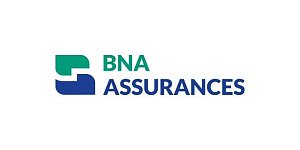Fitch Ratings has affirmed Wifak International Bank's (Wifak) National Long-Term Rating at 'BB-(tun)' with Negative Outlook, and National Short-Term Rating at 'B(tun)'.
KEY RATING DRIVERS
NATIONAL RATINGS
The Negative Outlook on Wifak's Long-Term National Rating reflects our view of the remaining near-term pressures on the bank's financial profile in the challenging operating environment of Tunisia. In particular, Wifak's asset quality may weaken when regulatory forbearance measures are withdrawn in 4Q21. This could negatively affect capitalisation that has been on a declining trend on the back of strong asset growth.
The ratings of Wifak reflect its small size and domestic market share (less than 1% of total banking- sector assets). Wifak, previously a leasing company, completed its transformation into a bank in 1H17. It is the smallest of three Islamic banks operating in Tunisia and is one of the smallest banks in the country but rapidly growing. Last year marked its third full year of operating as a bank and its business model is evolving rapidly. Growth is projected to be strong in the next five years.
The bank operates exclusively in Tunisia, where real GDP contracted 8.6% in 2020 due to a pandemic-related shock. Fitch expects the economy to return to 4% growth in 2021, but downside risk remains to our baseline scenario, given the evolving impact of the pandemic shock and uncertainty around the duration of containment measures, which have affected domestic economic activity.
Wifak almost exclusively finances non-retail customers (about 91% of total exposures). Main strategic objectives include continuous growth to reach a 1.4% financing market share at end-2025 (0.6% currently), strengthening its retail franchise through branch openings and digital offerings (including mobile payments) and reducing risk appetite. During 2020, the bank successfully diversified away from its legacy leasing portfolio towards a broader mix of ijara (traditional leasing) and murabaha (cost-plus financing). At end-2020, murabaha financing was 55% of the total financing portfolio (end-2019: 38%).
Wifak is not yet profitable, as could be expected since it is still in the early stages of its transformation. In 2020, the bank reported a TND5.4million net loss (2019: TND22million), due to high operating expenses and high loan impairment charges in line with the Central Bank of Tunisia's (CBT) tightening rules on collective provisions calculation. A review of its risk-appetite framework was completed during 2020, aimed at tightening underwriting standards and strengthening risk controls. Nevertheless, we expect impairments to continue to be large in 2021 as operating conditions remain difficult in Tunisia.
Fitch-calculated impaired financing/gross financing increased to 13.6% at end-2020 (end-2019: 12.7%) as some of Wifak's larger exposures experienced problems. An overhaul of underwriting standards and tougher monitoring and recovery procedures adopted by the bank are expected to result in containment of additional impairments. The government's debt relief measures (allowing corporate borrowers to defer their loan servicing payments) extended until September 2021 along with loan restructuring will slow recognition of impaired loans in the near term, but will not necessarily ease asset-quality pressures.
Wifak's funding profile continued to improve in 2020. The bank has been diversifying away from the sources of funding previously available to leasing companies and is growing its customer deposit base (79% of non-equity funding). Customer deposits were up 38% at end-2020, in particular low-cost current and savings accounts, in line with the bank's strategy, which benefitted funding costs. Wifak issued its second TND15 million medium-term sharia-compliant bond on the domestic capital market in November 2020, which provided a source of longer-term funding. Further issuance are envisaged within the next five years, which will continue to strengthen the bank's liability profile.
Wifak's collateralised funding from the CBT grew to 14% of total non-equity funding (2019: below 1%) as CBT widened the pool of eligible collateral accepted against repo transactions. The bank's liquidity coverage ratio reached 170% at end-2020 while Fitch-calculated financing-to-deposit fell to 102% (end-2019: 122%), within the CBT regulatory limit of 120%.
The bank's Fitch core capital/risk-weighted assets ratio was 20% at end-2020 (end-2019: 26%) and this compares well with the banking-sector average. However, this should be viewed in light of the bank's high growth targets and yet loss-making activity. Wifak's internal medium-term target is to maintain a total regulatory capital ratio above 12%, above the 10% regulatory minimum.







































